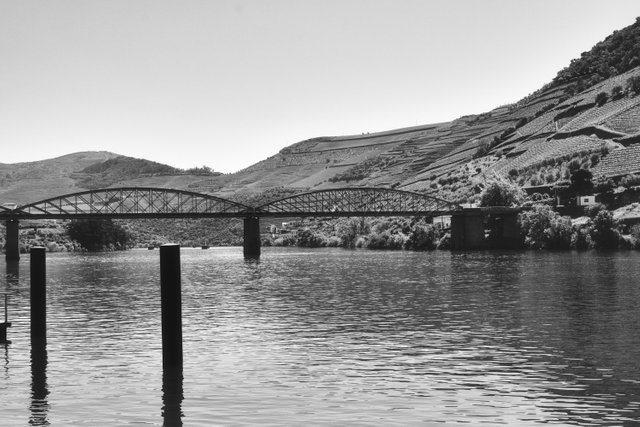📷Curiosities about the Azores Archipelago
Italy Community
✅ 1841–1845: The Hydrographic Campaigns of Captain Vidal
Portuguese Pioneers in Atlantic Navigation
The Portuguese were pioneers in 15th-century Atlantic navigation. They explored the African coastlines and Atlantic islands, studied wind patterns, compiled sailing instructions, and charted newly discovered lands on parchment. Many of these maps have survived time, serving as enduring evidence of Portugal’s trailblazing role and the high quality of its cartography.
These early maps were manuscript documents, often artistically decorated and overlaid with geographic coordinate systems. While latitude had long been calculated using well-known astronomical methods since the 15th century, determining longitude was far less precise. This led to significant distortions on maps and, ultimately, numerous shipwrecks. The urgency to solve the "longitude problem" spurred various efforts, eventually leading to the invention of the marine chronometer by John Harrison in 1765. His device was successfully tested on the voyages of Captain James Cook, beginning in 1768 aboard the HMS Endeavour.
Early Nautical Cartography of the Azores
By the late 18th century, nautical cartography still lacked a solid scientific foundation. Nevertheless, many renowned cartographers produced charts of the Azores, highlighting the strategic importance of the archipelago in global navigation.
The first known chart of the Azores was drawn by the Portuguese cartographer Luís Teixeira, who visited, traveled through, and described the islands. He later provided his map to Abraham Ortelius, who published it in 1584 in Theatrum Orbis Terrarum. This chart became the basis for later Dutch, French, and English versions, including maps by Willem Janszoon Blaeu, Johannes van Keulen, Pieter Goos, and others.
Notable Historical Charts of the Azores
| Year | Title | Author(s) | Place of Publication |
|---|---|---|---|
| 1584 | Açores Insulae, Theatrum Orbis Terrarum | Abraham Ortelius | Antwerp |
| 1608 | Angra - Sanct Michiels – Fayal, Het Licht der Zee-vaert | Willem Janszoon Blaeu | Amsterdam |
| 1682 | Nieuwe pascaert van alle Vlaemse eylanden | Johannes van Keulen | Amsterdam |
| 1764 | Carte des Isles Açores ou Terceres | Jacques-Nicolas Bellin | Paris |
| 1789 | Carta Esferica de las Islas de los Azores ò Terceras | Don Vicente Tofiño de San Miguel | Madrid |
| 1797 | Chart of the Açores (Hawks) Islands | Laurie & Whittle | London |
| 1822 | A New Chart of the Azores or Western Isles | William Heather | London |
British Hydrographic Efforts and the Role of Captain Vidal
In response to growing global maritime interests, Britain established the position of Hydrographer of the Navy in 1795, appointing Alexander Dalrymple. This led to the founding of the United Kingdom Hydrographic Office, which centralized the production of nautical charts for the Royal Navy.
From September 1841 to January 1845, in this context of scientific exploration, Captain Alexander Thomas Emeric Vidal conducted hydrographic surveys in the Azores aboard the HMS Styx. The presence of a Royal Navy vessel in Portuguese waters likely had official approval. However, reports emerged suggesting the mission's true purpose was to identify a suitable site for a British naval support port in the archipelago.
“In January 1842, the British war steamer Styx, commanded by Mr. Alexander Vidal, arrived in Faial. He was on a mission from his government to explore and select a location for constructing a dock in this archipelago at the request of the West Indies Company. He stayed on the island to explore the bays of Horta and Porto Pim, the surrounding coast, and various quarries.”
Social Records of the Expedition
Captain Vidal and his crew’s presence in the Azores was documented in the Annals of the Dabney Family in Faial:
“It must have been in the early 1840s that Captain Vidal, aboard the HMS Styx, began charting these islands and Madeira to create his beautiful maps. He and his officers were frequent visitors at the home of C.W.D. [Charles William Dabney].”
First Scientific Survey of the Azores
This marked the first hydrographic survey of the Azores based on scientific principles. As a result, the following charts were produced:
Azores or Western Isles
Surveyed by Capt. A.T.E. Vidal, R.N., 1843–4.
Scale: ~1:1,000,000
Published: London, Hydrographic Office of the Admiralty, 1867. (BA 1950)Azores – Corvo and Flores
Surveyed: 1844
Scale: ~1:150,000
Published: 1849 (BA 1946)Azores – Fayal, Pico, and São Jorge
Surveyed: 1844
Scale: ~1:170,000
Published: 1864 (BA 1855)Azores – Terceira and Graciosa
Surveyed: 1844
Scale: ~1:150,000
Published: 1864 (BA 1818)Azores – São Miguel
Surveyed: 1844
Scale: ~1:150,000
Published: 1849 (BA 1854)Azores – Santa Maria and Formigas
Surveyed: 1843
Scale: ~1:150,000
Published: 1849 (BA 1865)Azores – Horta and Pim Bays; Fayal Channel
Surveyed: 1843
Scale: ~1:13,000 / 1:30,000
Published: 1849 (BA 1940)
These charts use Greenwich as the prime meridian and include island profiles, port plans, and a unique reference number from the Hydrographic Office in the bottom-right corner.
Portugal’s Delayed Hydrographic Organization
While Britain took the initiative, Portugal lagged behind in hydrographic development. Although the 18th century brought scientific and technological advances, Portugal remained largely uninvolved.
In 1798, Portugal founded the Royal Maritime, Military, and Geographic Society for the Design, Engraving, and Printing of Hydrographic, Geographic, and Military Charts. Its founding charter acknowledged the severe lack of quality nautical charts, noting that the Portuguese Navy was forced to rely on foreign maps. However, events like the French invasions, the royal family’s flight to Brazil, and the civil war (which ended in 1834) hindered progress. It wasn't until after 1836 that Portugal began organizing its hydrographic services, with the creation of the hydrographic engineer course and, in 1849, the Hydrographic Division of the Admiralty Council. This was followed by the founding of the Navy’s Hydrographic Engineers Section in 1851.
Legacy and Later Developments
Captain Vidal’s charts remained the primary reference for many years. A complete and updated survey of the Azores was only conducted starting in 1939 by the Hydrographic Mission of the Adjacent Islands (MHIA), established in 1936. This mission used the hydrographic vessels Carvalho Araújo and later D. João de Castro to carry out its work.
I am sharing photos of landscapes, moments and experiences. Nature and sea are the most visited themes in my photo collection, but any attention-grabbing aspect can be photographed. Hope you enjoy it...
| Category | #italy |
| Photo taken at | Douro Valley - Portugal |
)


Upvoted! Thank you for supporting witness @jswit.